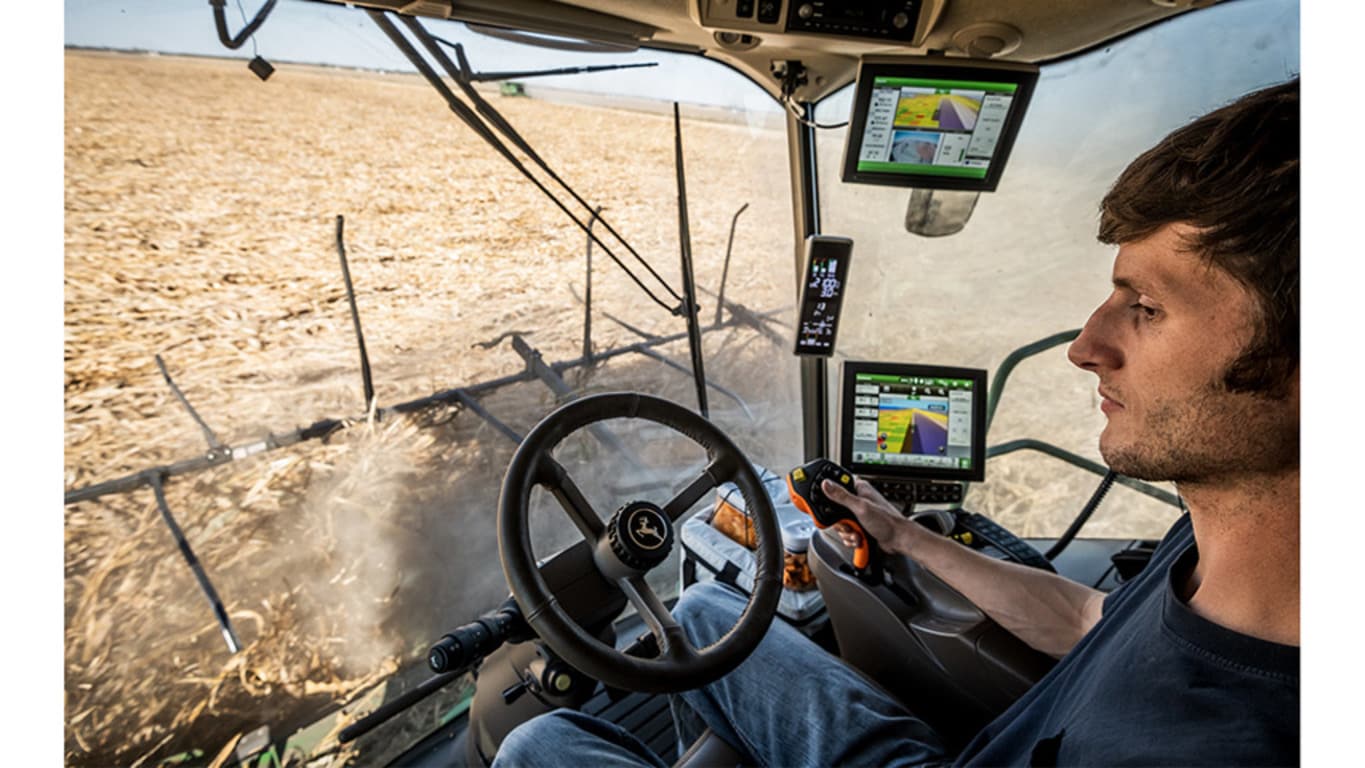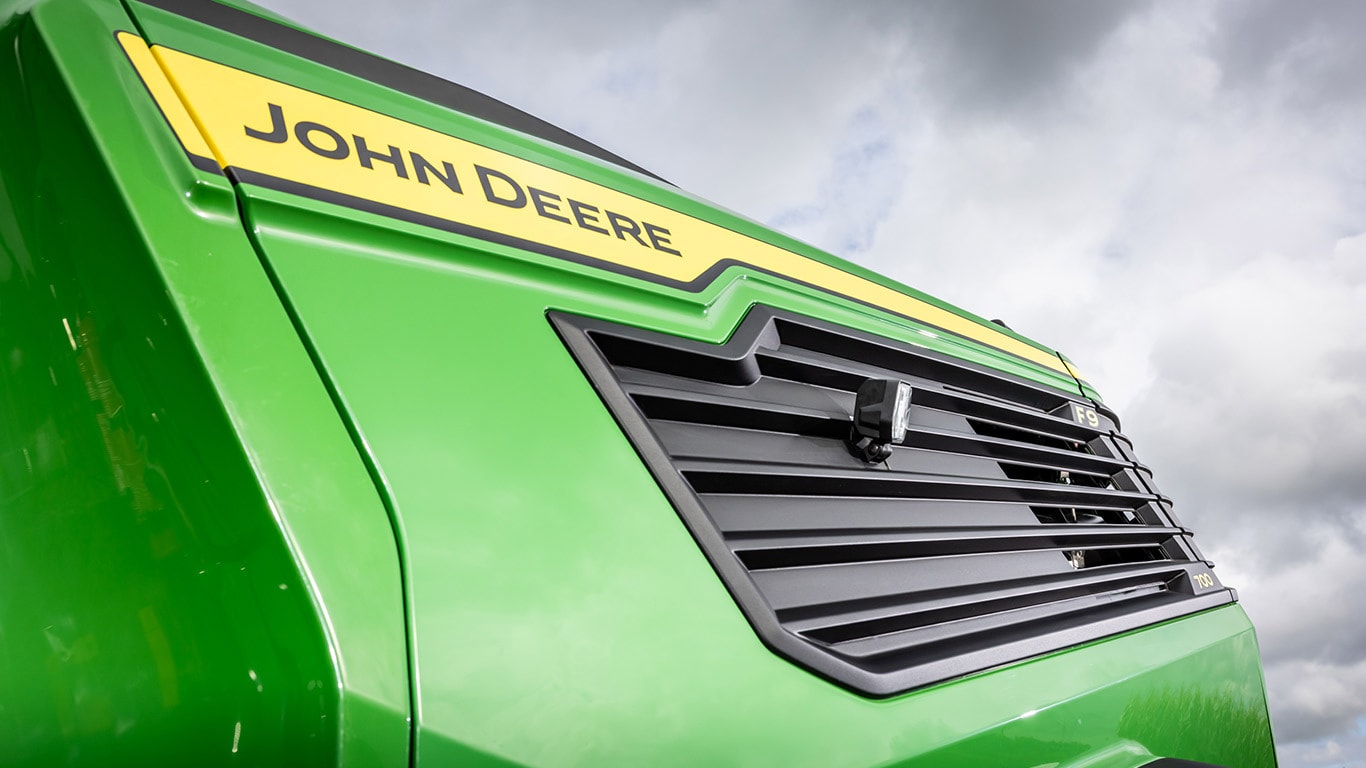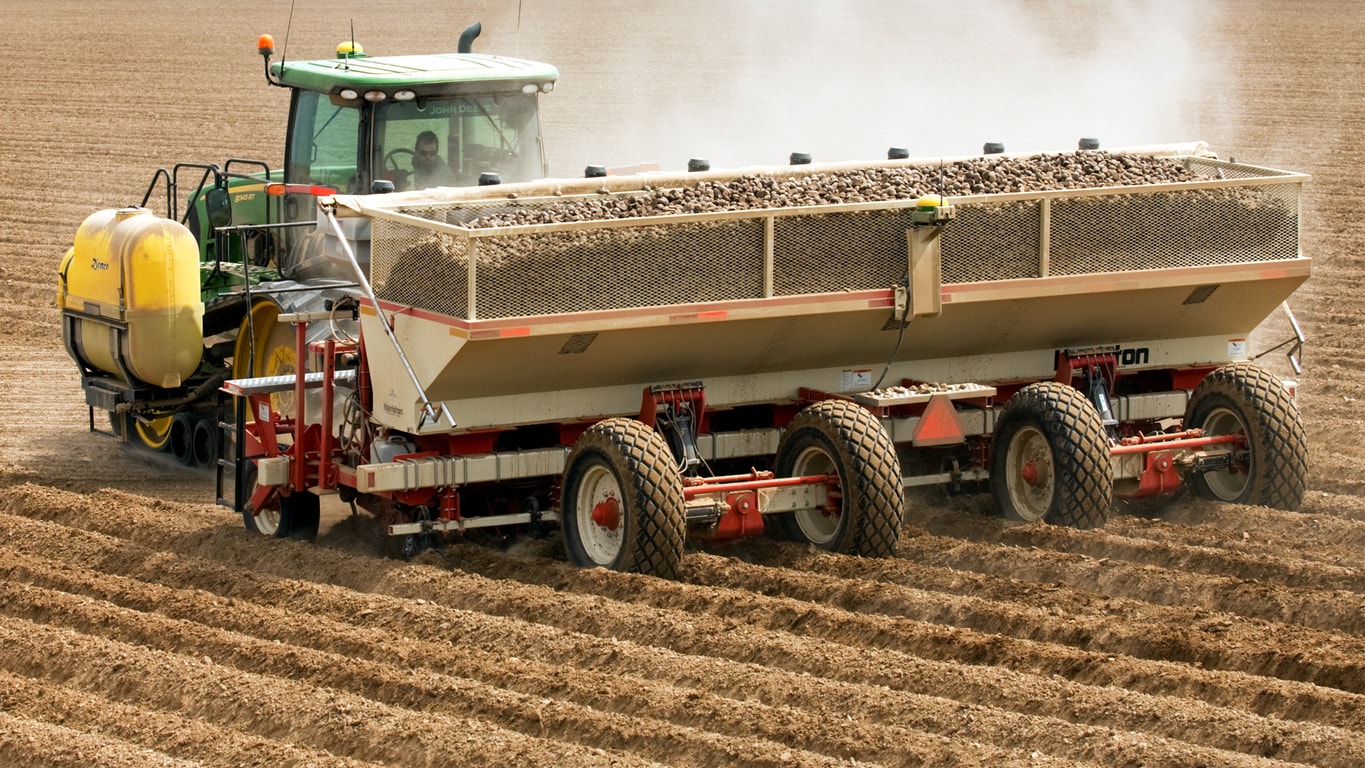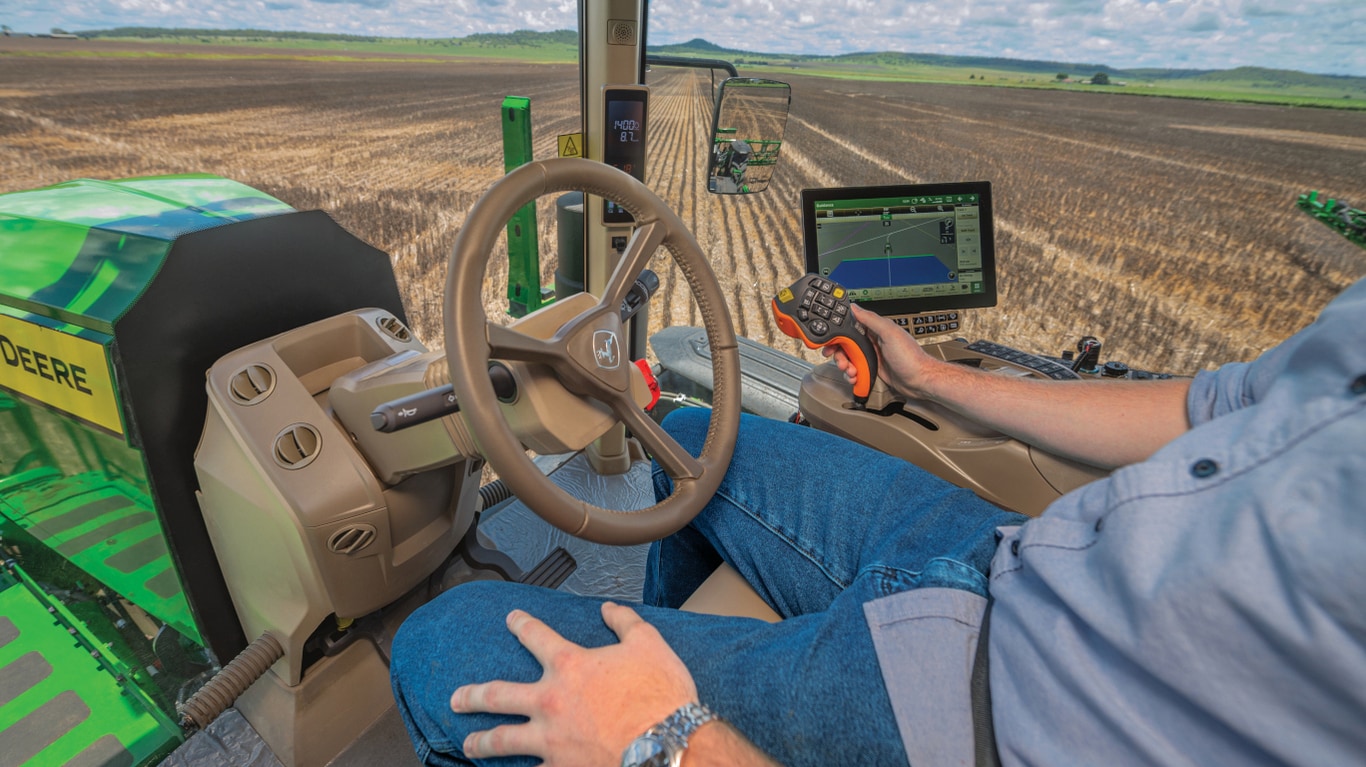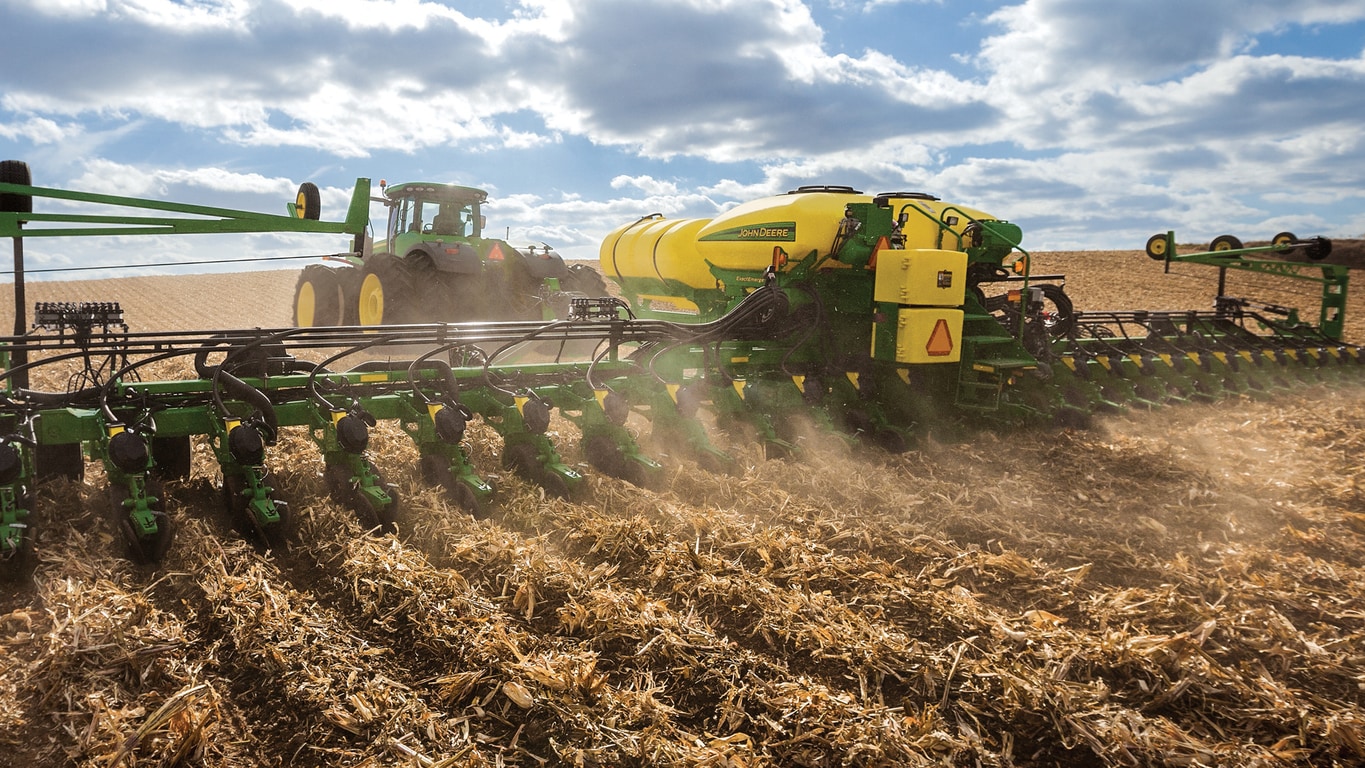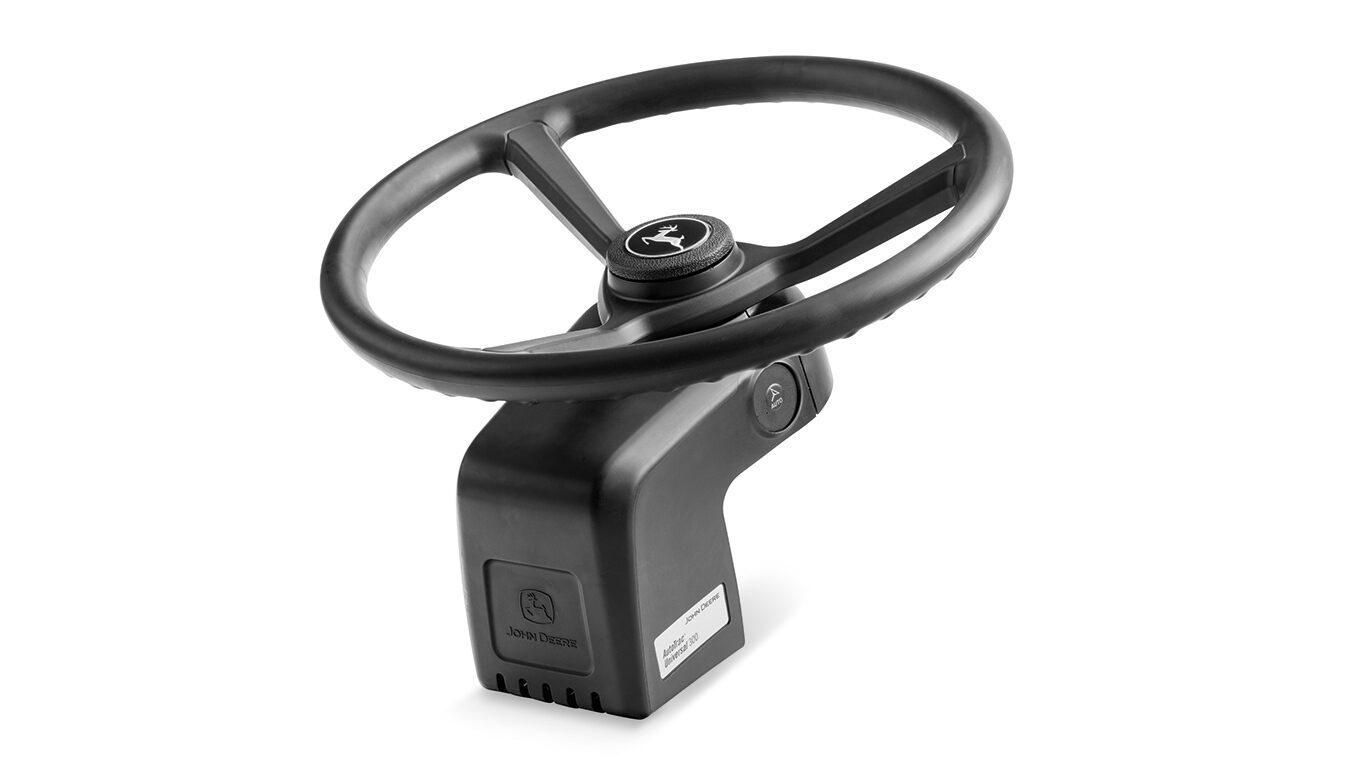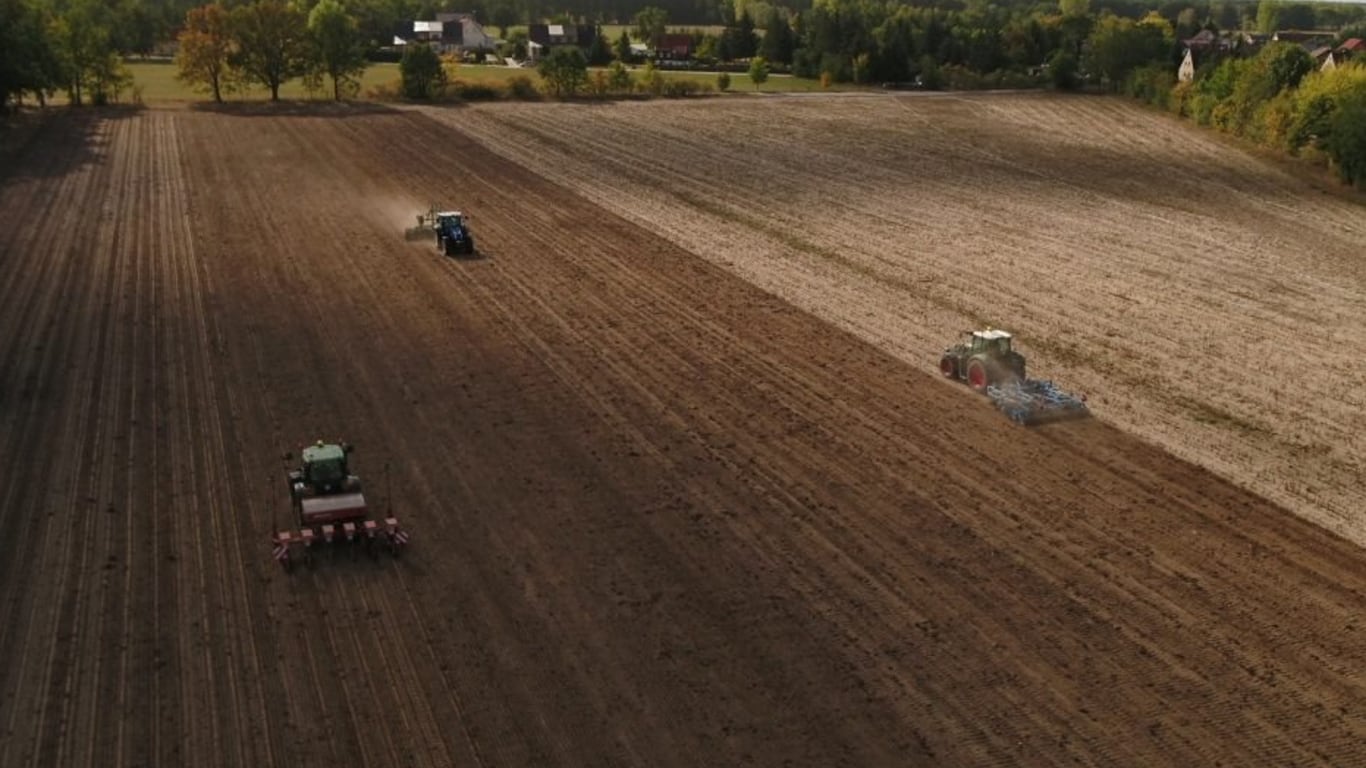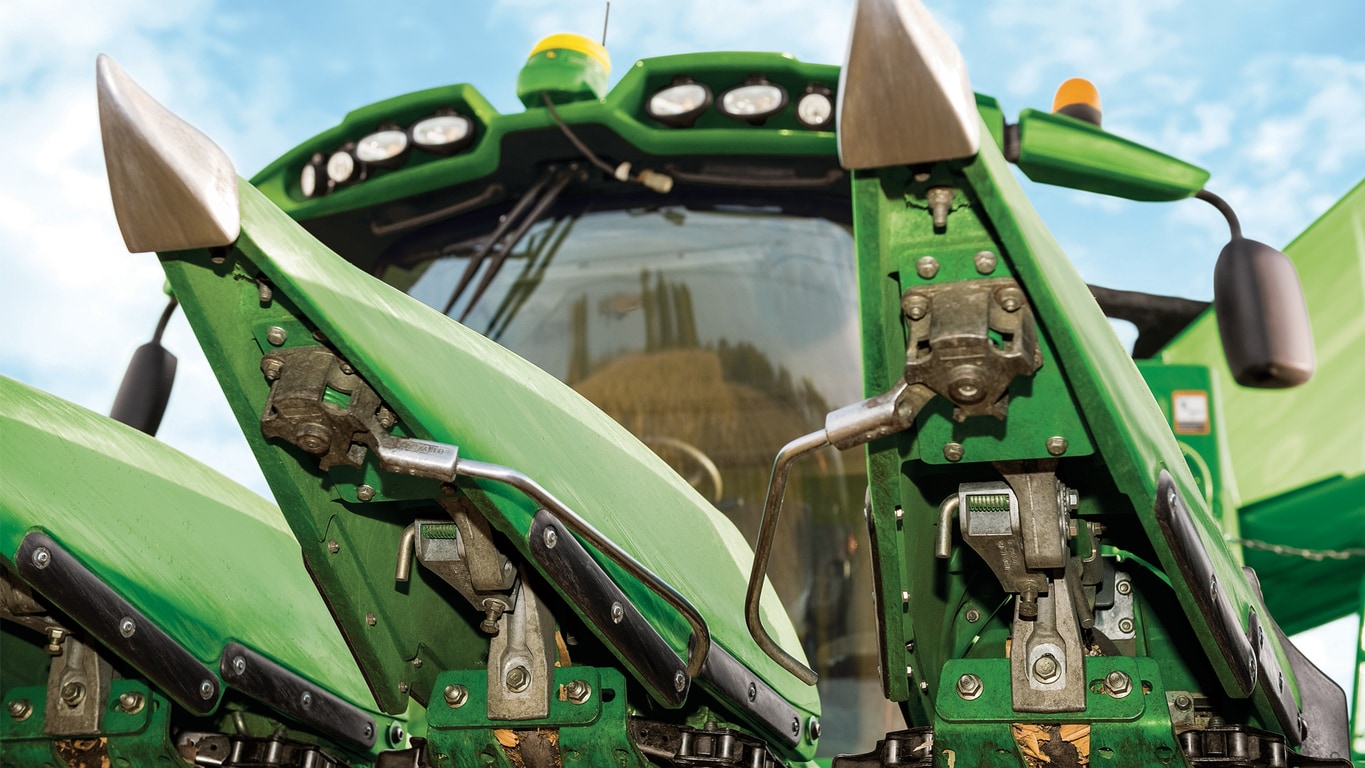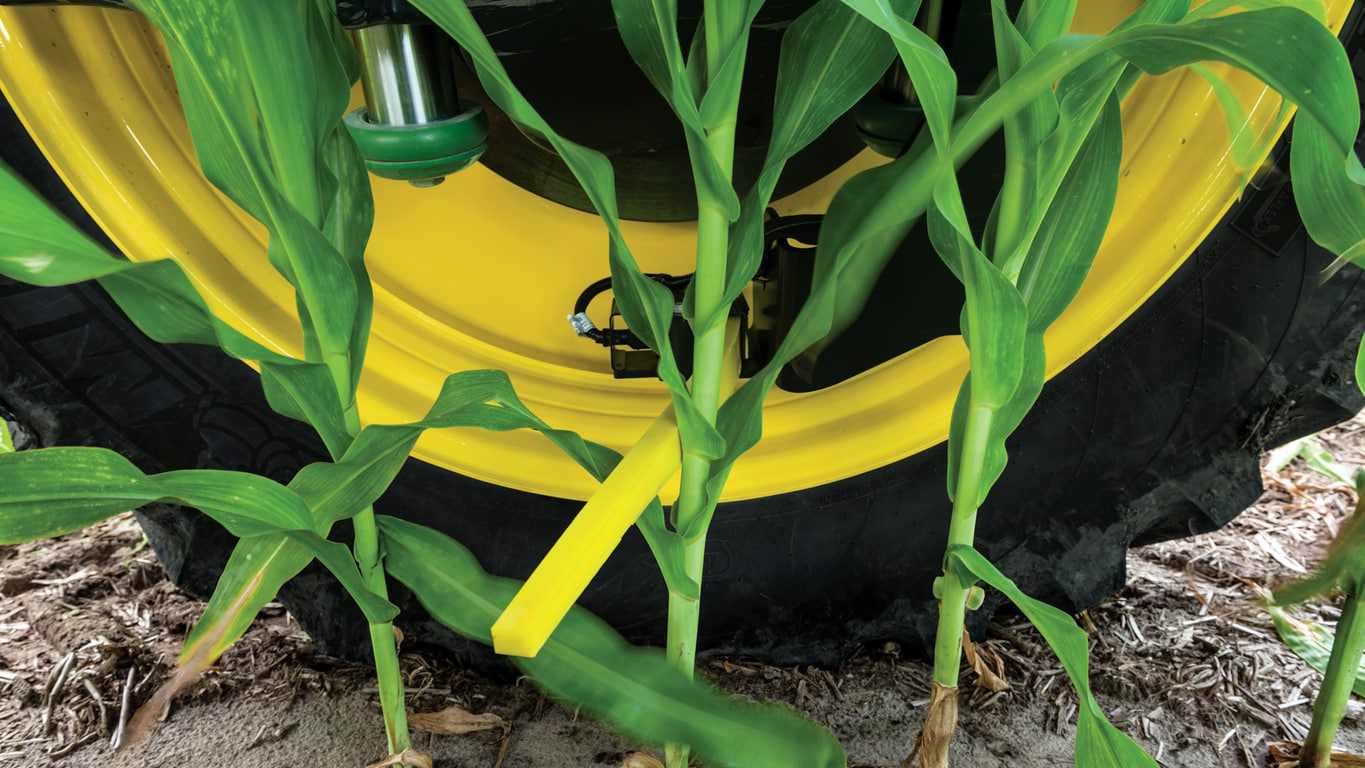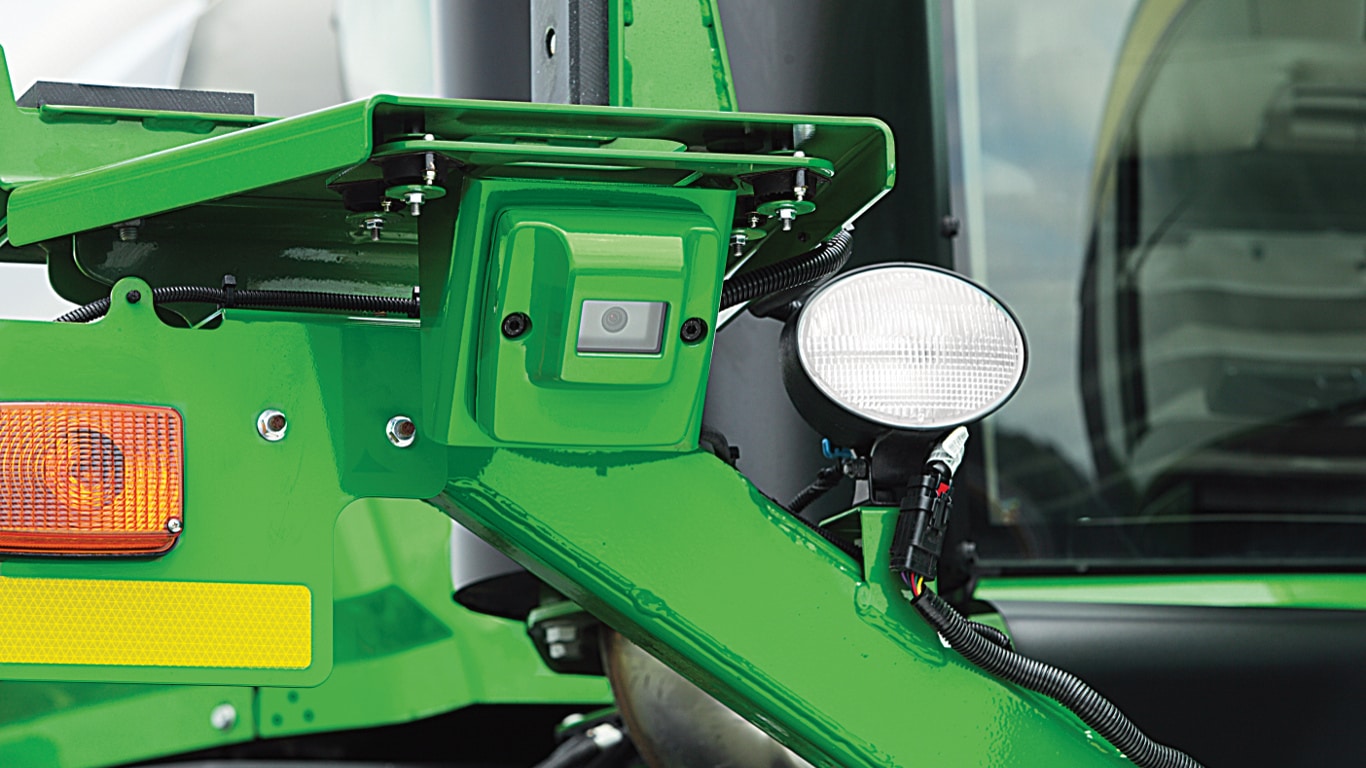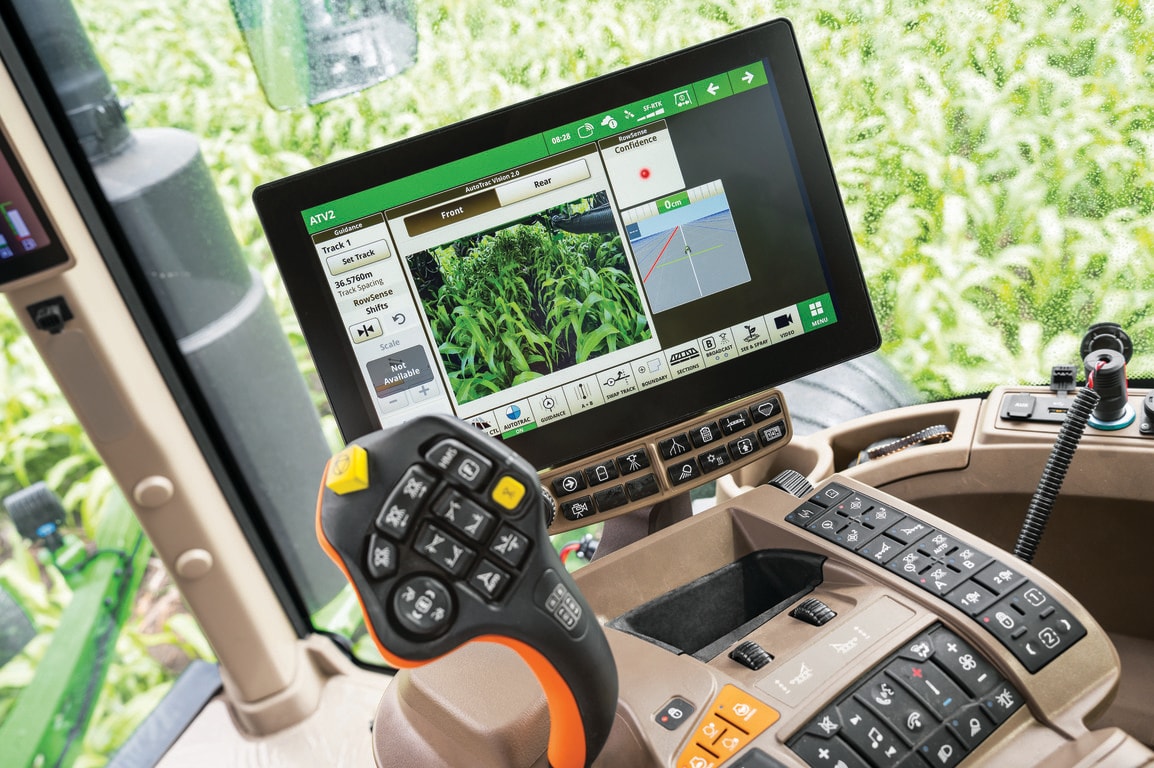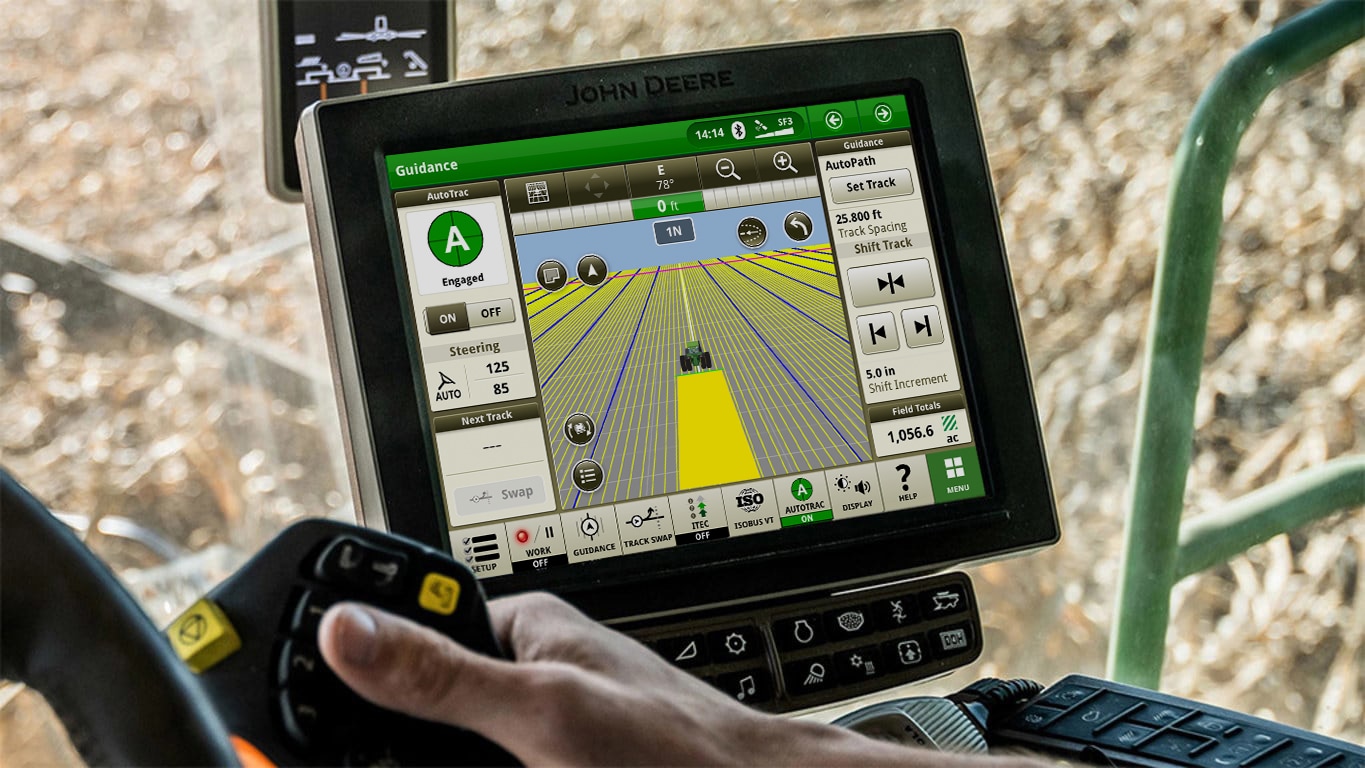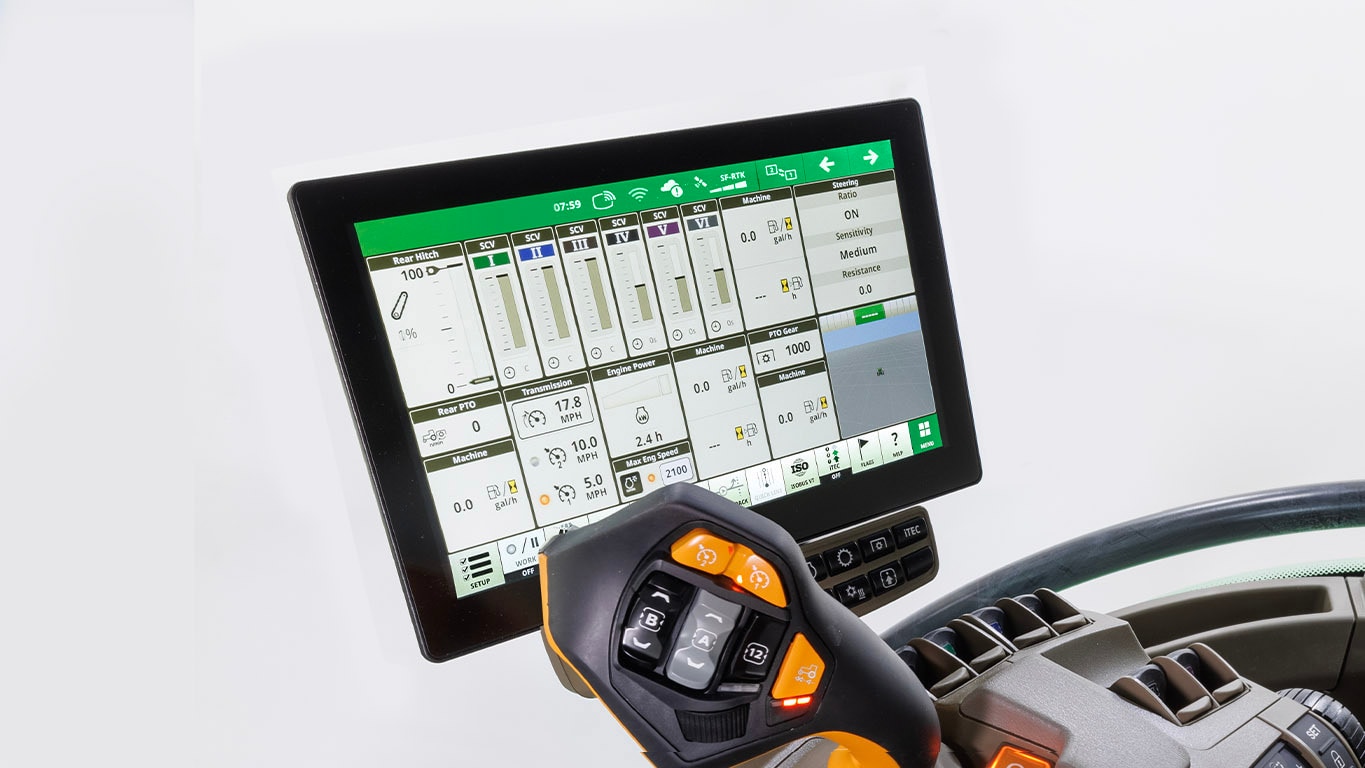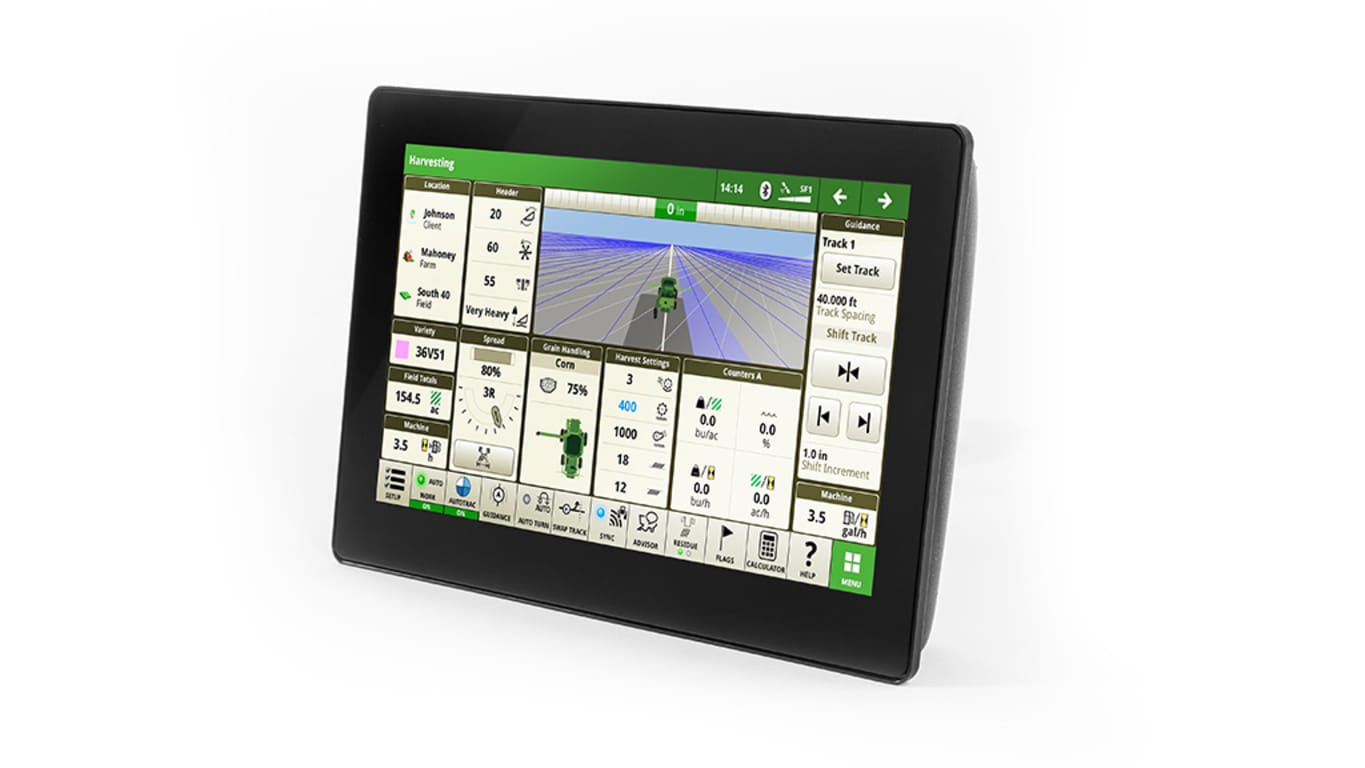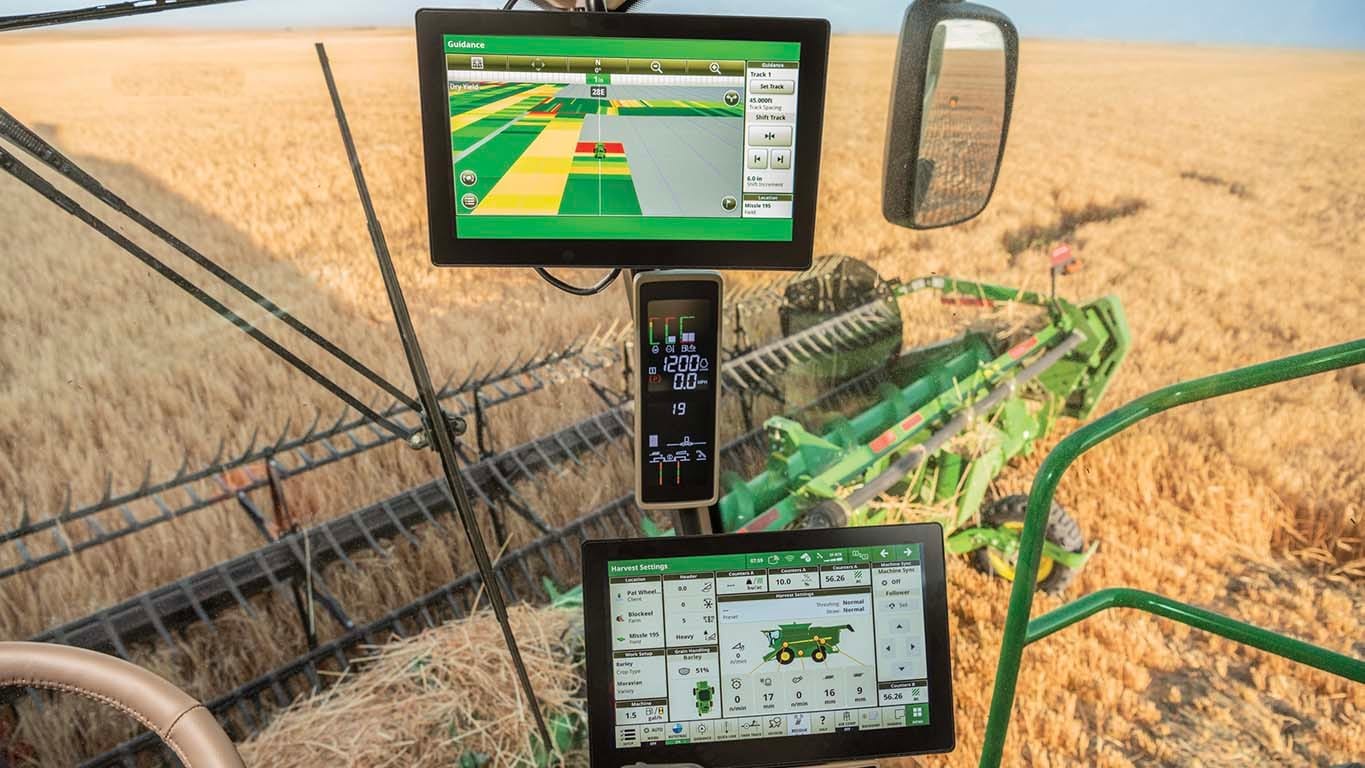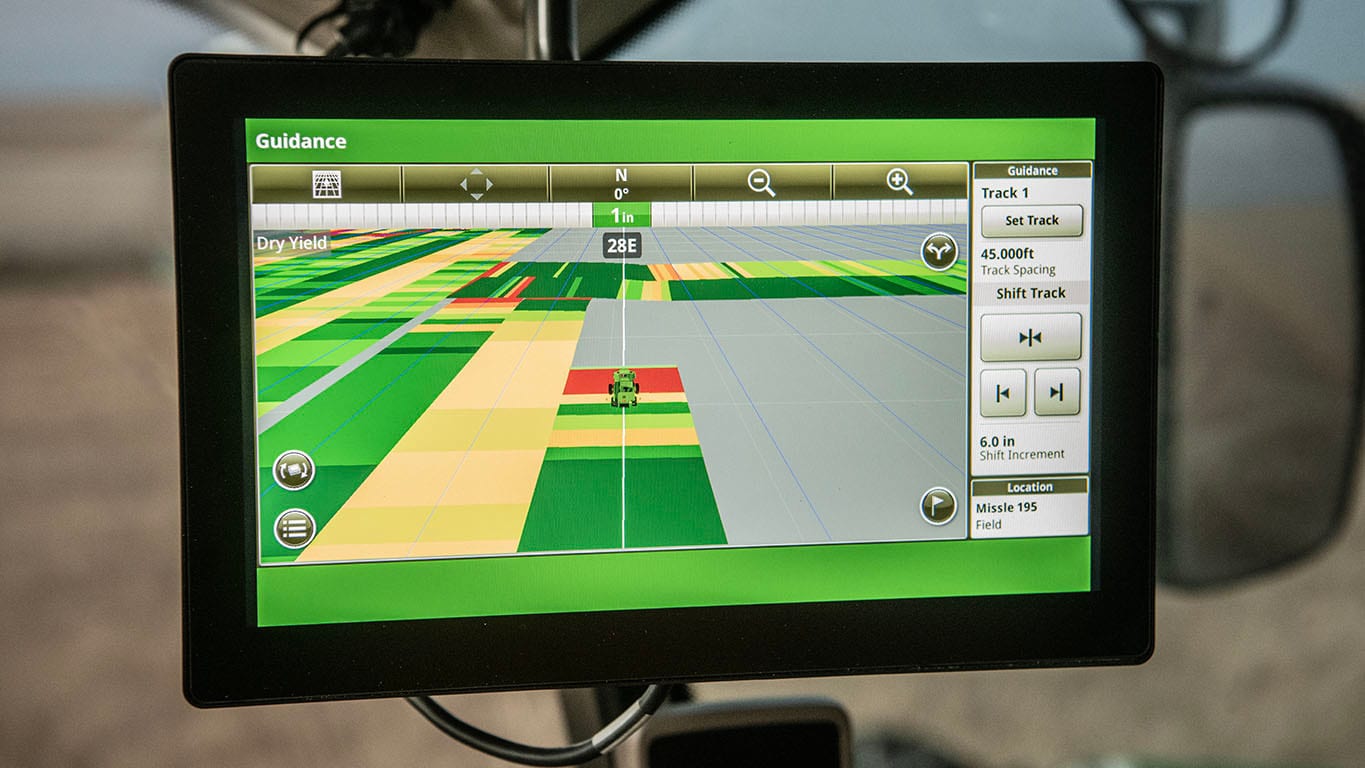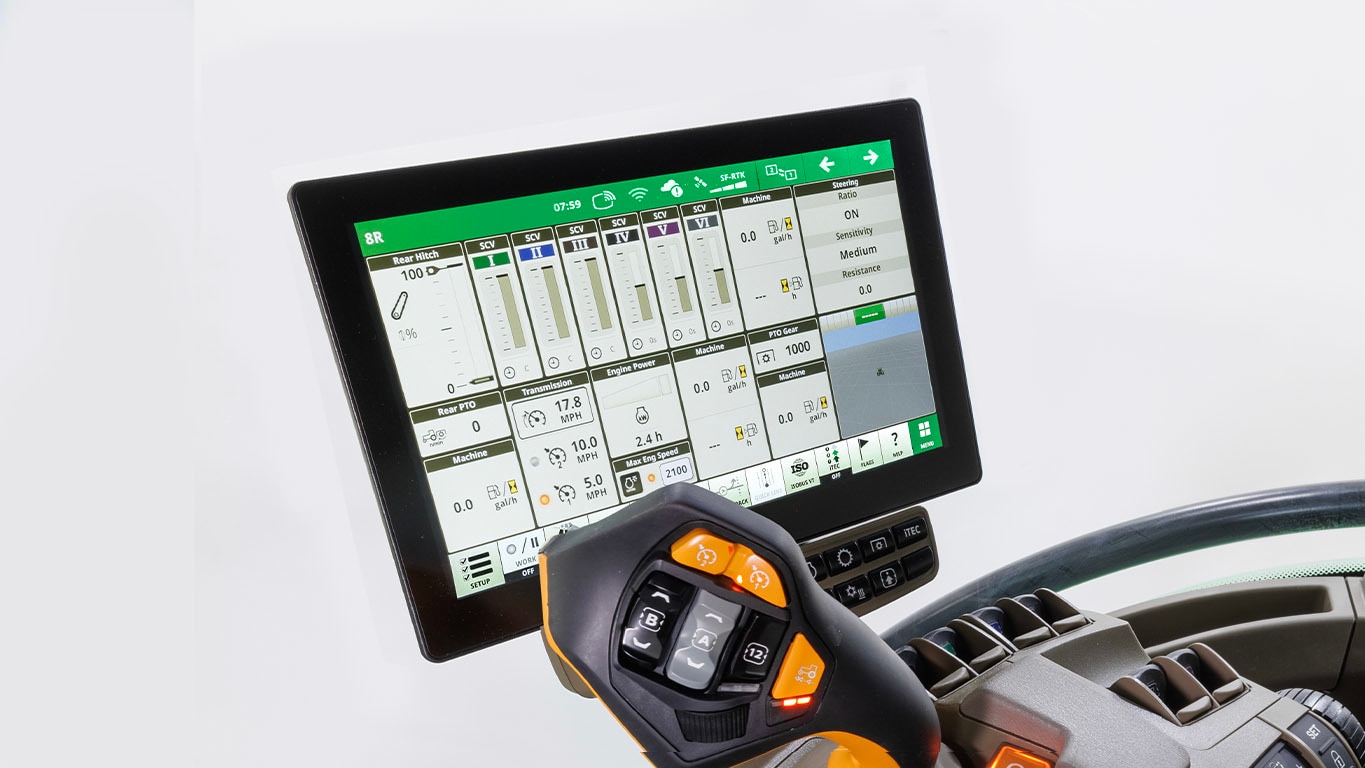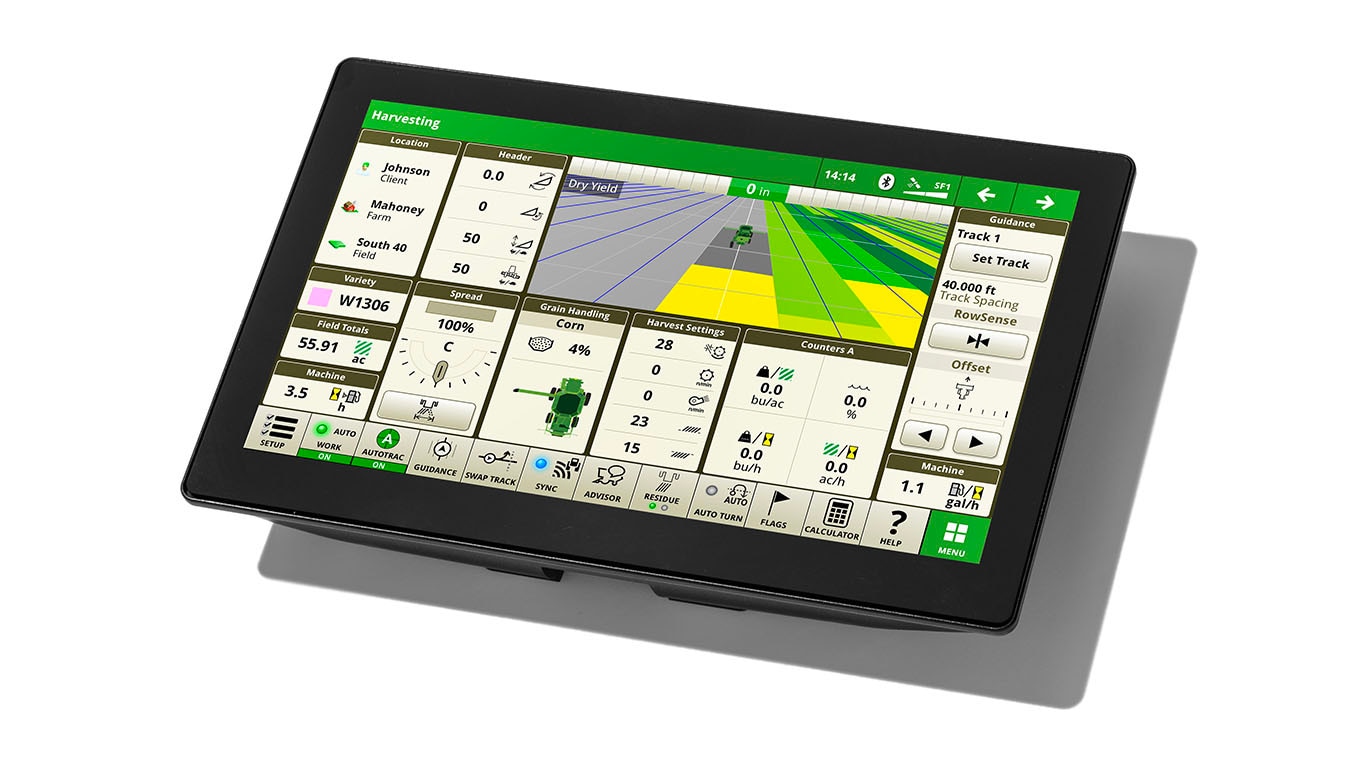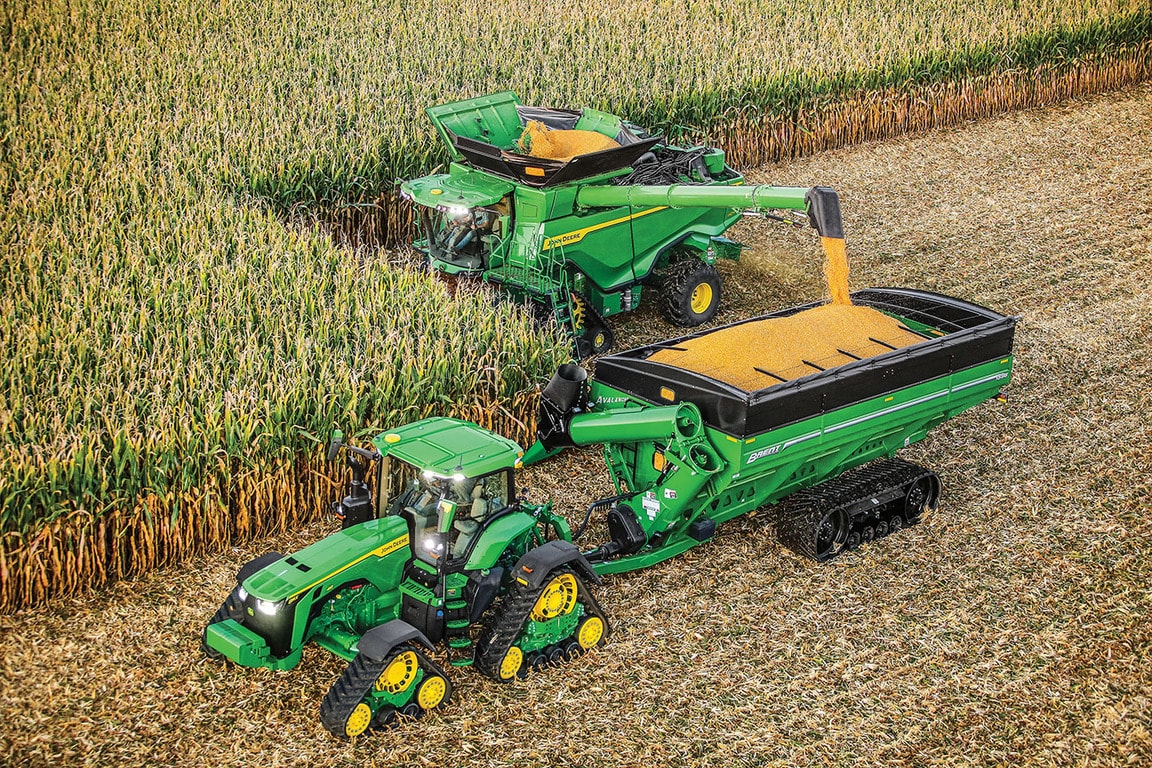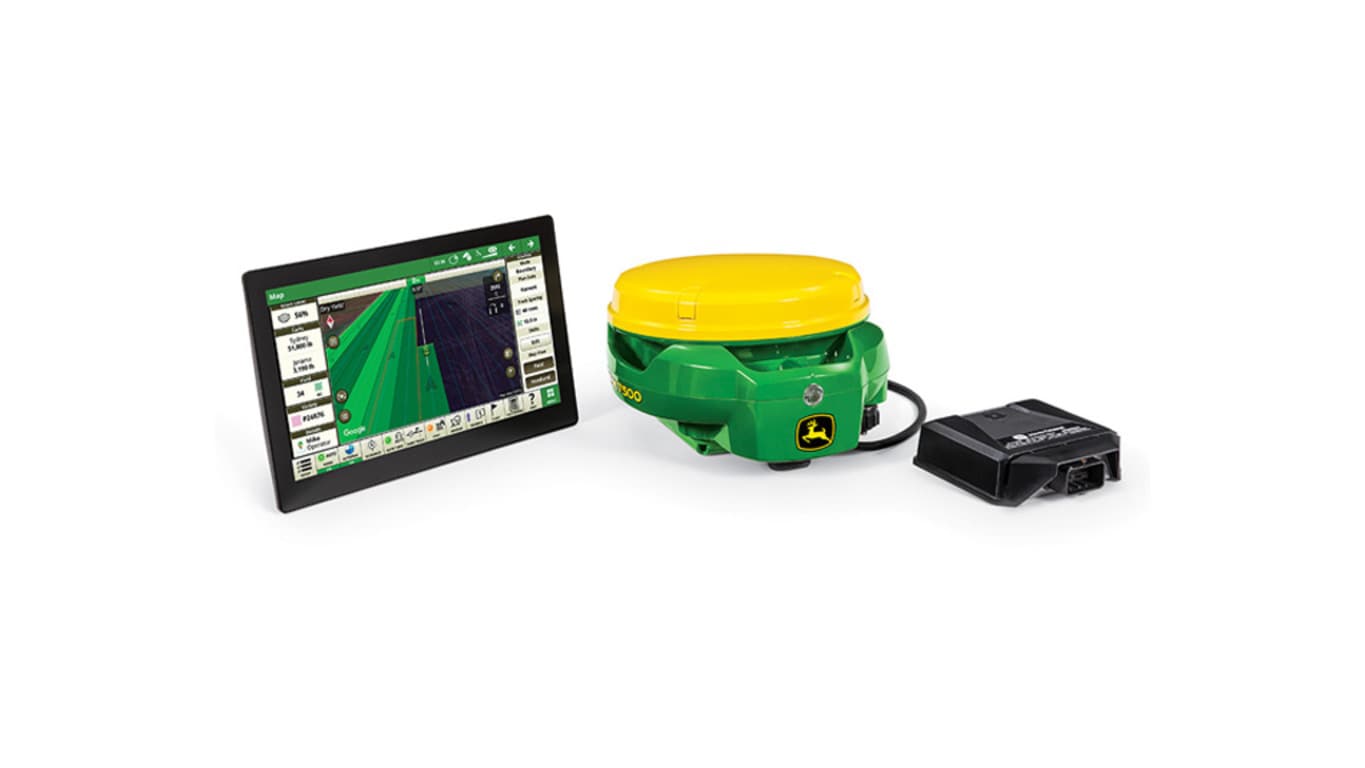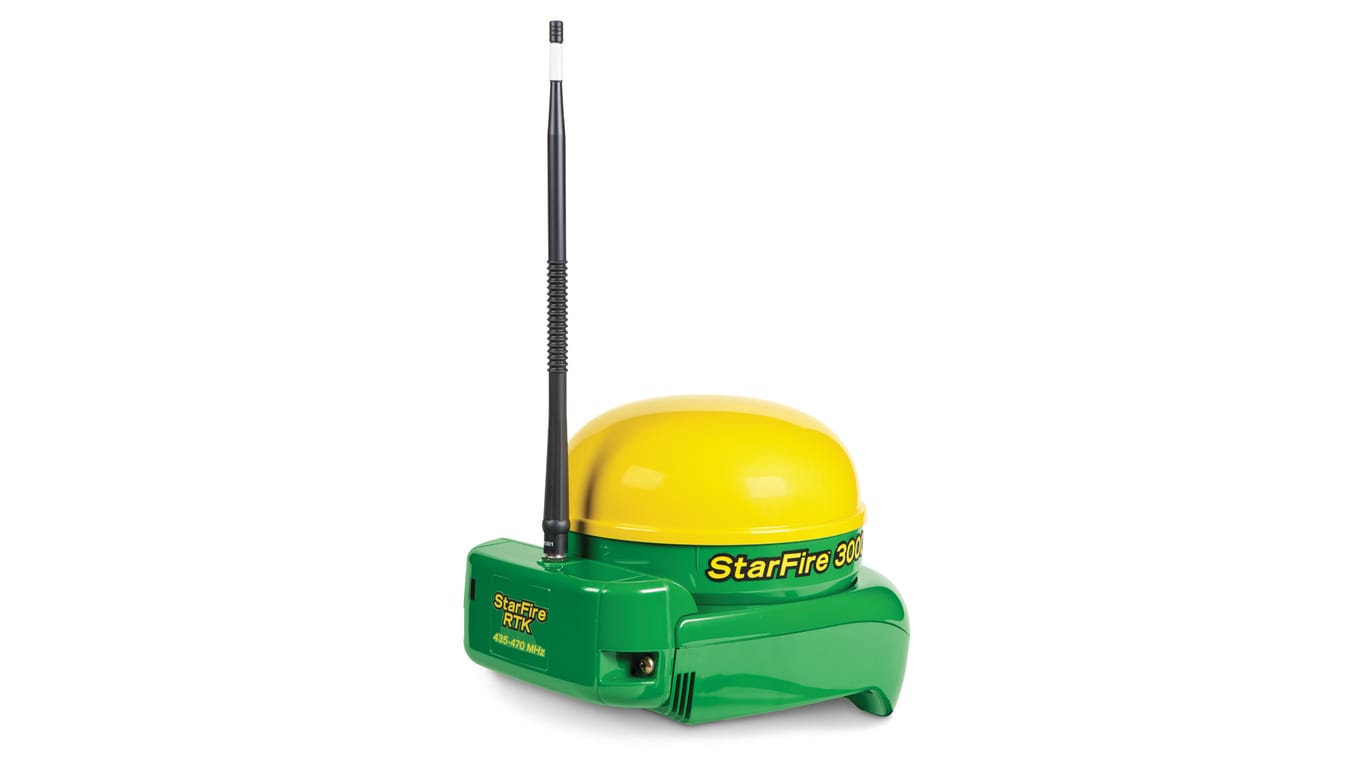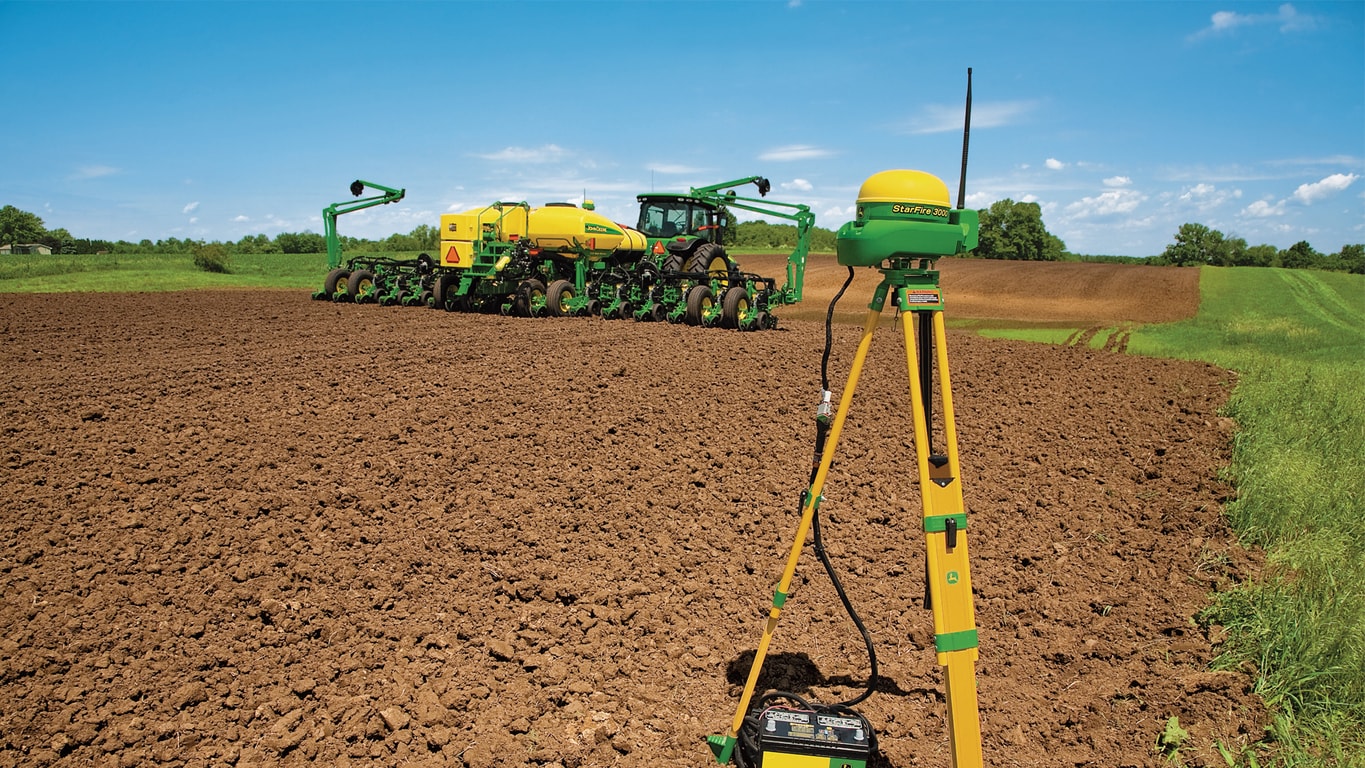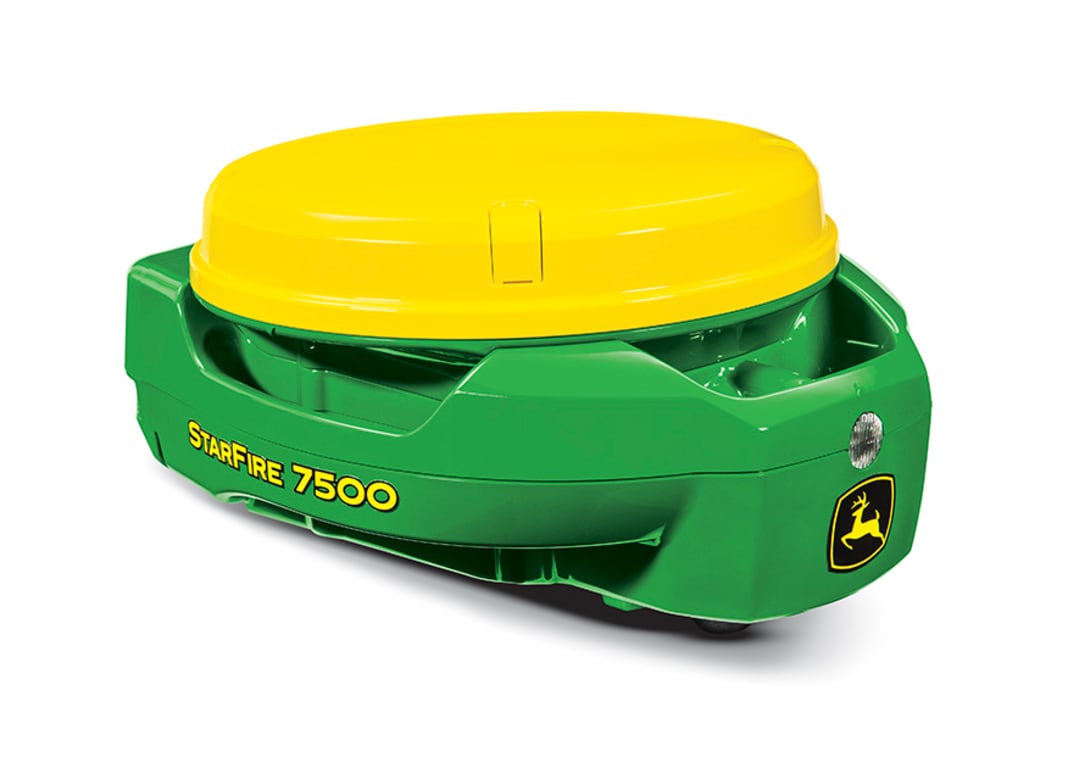Regardless of whether you produce row-crops, like corn, or you are growing soybean or small grains, AutoPath is the guidance solution for you. This technology enables precise execution of farming practices that might not be possible otherwise.
- Seed between the rows of previously drilled small grains (boundaries)
- Run minimum-till or no-till implements precisely between last year’s crop rows (boundaries + rows)
- Plant cover crops to optimize emergence and crop emergence (boundaries + rows)
- Plant crops precisely on top of fertilizer strips to maximize yields (rows)
AutoPath (Boundaries) and AutoPath (Rows) features work independently, or seamlessly together to provide optimal path planning throughout the entire crop season.
The graphic below illustrates how a grower can maximize the benefits of AutoPath by using both (Rows) and (Boundaries) modes in tandem throughout the crop season. By integrating these two modes, growers can streamline operations, reduce inefficiencies, and ultimately improve yields.
In this example, the grower begins the season with a pre-plant strip-till pass. Since there are no rows documented yet, this grower can use their driven field boundary data to generate an AutoPath plan using (Boundaries) mode. By selecting the Align to Boundary method, they ensure a clean, and perfect first pass—minimizing skips, overlaps, and unnecessary partial passes. Growers can expect to eliminate at least one pass through the field using this method.
As the grower executes this strip-till plan that was generated using AutoPath (Boundaries), precise row data can be documented and used for future AutoPath plans using ‘rows’ mode.
When it’s time to plant, the grower can use that same row data to precisely guide the planter—placing seeds directly on or just offset from the strip-till rows for optimal emergence. During planting, the farmer can choose to document new row data, which can then be used to guide spraying operations. AutoPath (rows) plan will place guidance lines throughout the field, that keeps sprayer tires stay off the crop rows, protecting young plants and preserving yield potential.
When harvest arrives, the same row data captured during the planting step, can be used to guide the combine. This eliminates the need to manually count rows and helps avoid the dreaded “row of shame” left behind from misalignment.
Finally, after harvest, the farmer can return to Boundaries mode to create a tillage plan—setting a specific angle for the tillage pass to prepare the field for the next season.
While each AutoPath mode is powerful on its own, using Rows and Boundaries together throughout the season creates a seamless, data-driven workflow that enhances efficiency and productivity from start to finish.
Here are some additional ways you can use AutoPath (boundaries + rows) to maximize your operation throughout the entire crop year.
Small Grains: AutoPath (Boundaries)-only
Soybeans: AutoPath (Boundaries) + (Rows)
Corn: AutoPath (Boundaries) + (Rows)
AutoPath (Rows)-only
As you can see, you’ve got options when creating guidance blueprints for each of your fields throughout the entire crop season. Whether you use AutoPath (boundaries), (rows), or both together, you are setting yourself up for success for the production year.
